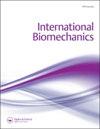一个随机结构可靠性模型解释了肩袖修复损伤
Q2 Medicine
引用次数: 4
摘要
据报道,大肌腱套撕裂手术修复后肌腱再撕裂率很高。本研究建立了一个具有指导质量改善干预措施潜力的概率结构可靠性模型。基于结构可靠性和马尔可夫过程的复发性撕裂生存概率生物力学模型,将手术修复承受拉伸载荷和冈上肌施加的载荷的能力视为独立的对数正态分布随机变量。为了使修复在第9天结束时保持完整,它必须在第0、…、t−1天保持完整。在预测会发生撕裂后,模型中的修复仍然是撕裂的。该模型预测两年生存率为75.7%,在其他人报告的Kaplan-Meier数据的95%置信区间内。该模型的预测可用于提高修复存活率:降低修复强度和术后冈上肌负荷的方差是降低再撕裂率的有效方法。单独减少方差可能是改善这种疾病的手术治疗的有效方法。本文章由计算机程序翻译,如有差异,请以英文原文为准。
A stochastic structural reliability model explains rotator cuff repair retears
High rates of tendon retear following surgical repair of large rotator cuff tears have been reported. This study developed a probabilistic structural reliability model of retear with potential to guide quality improvement interventions. A probabilistic biomechanical model of survivorship from a recurrent tear, based on structural reliability and Markov processes, treated the capacity of the surgical repair to withstand tensile loading and the load applied by the supraspinatus muscle as independent lognormally distributed random variables. For a repair to remain intact at the end of the tth day, it had to remain intact on days 0, … , t − 1. After retear was predicted to occur, that repair remained torn in the model. The model predicted two-year survival of 75.7%, which is within the 95% confidence interval of the Kaplan–Meier for data reported by others. The model’s demonstrated prediction of retear can be used for improving repair survival: lowering the variance in both repair strength and in post-operative supraspinatus muscle loading is an effective method for lowering the retear rate. Variance reduction alone may be an effective way to improve surgical treatment of this disorder.
求助全文
通过发布文献求助,成功后即可免费获取论文全文。
去求助
来源期刊

International Biomechanics
Medicine-Rehabilitation
CiteScore
1.90
自引率
0.00%
发文量
2
审稿时长
17 weeks
期刊介绍:
International Biomechanics is a fully Open Access biomechanics journal that aims to foster innovation, debate and collaboration across the full spectrum of biomechanics. We publish original articles, reviews, and short communications in all areas of biomechanics and welcome papers that explore: Bio-fluid mechanics, Continuum Biomechanics, Biotribology, Cellular Biomechanics, Mechanobiology, Mechano-transduction, Tissue Mechanics, Comparative Biomechanics and Functional Anatomy, Allometry, Animal locomotion in biomechanics, Gait analysis in biomechanics, Musculoskeletal and Orthopaedic Biomechanics, Cardiovascular Biomechanics, Plant Biomechanics, Injury Biomechanics, Impact Biomechanics, Sport and Exercise Biomechanics, Kinesiology, Rehabilitation in biomechanics, Quantitative Ergonomics, Human Factors engineering, Occupational Biomechanics, Developmental Biomechanics.
 求助内容:
求助内容: 应助结果提醒方式:
应助结果提醒方式:


